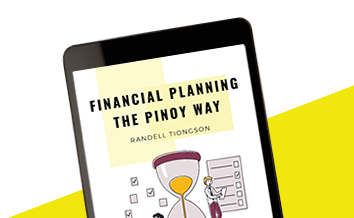Making remittances count
By Randell Tiongson on July 17th, 2011
I just finished a Practical Finance Seminar in Singapore a few hours ago and it’s inspiring to see a few dozen Filipinos working hard outside the country, sacrificing and doing their best to have a better life. It is even more encouraging to see them getting financially educated even if they have to listen to a boring speaker like me. Sights like this makes my job fulfilling and keeps my passion burning to help Filipinos get more and more financial education.
 I saw a tweet from my good friend Susan Ople of the Blas F. Ople Policy Center where she stated statistics on OFW remittances that blew my mind away. She stated that in 1975, the remittances amounted to US$ 103 Million. Today, remittances are now up to US$ 2 Billion a month!
I saw a tweet from my good friend Susan Ople of the Blas F. Ople Policy Center where she stated statistics on OFW remittances that blew my mind away. She stated that in 1975, the remittances amounted to US$ 103 Million. Today, remittances are now up to US$ 2 Billion a month!
Unfortunately, I need to state some facts that continues to disturb me and should disturb every other Filipino. A recent study conducted to determine the financial quotient of Filipinos revealed that only 1 out of 10 Filipinos prepare for retirement. NEDA numbers placed the average savings rate of the Philippines at 16% as compared to Indonesia, Malaysia, Thailand, Hong Kong and our other neighbors well above 30%. Less than 50% of Filipinos actually own their home, and that includes those whose homes are mortgaged. Less than 0.5% of Filipinos invest in the Stock Market. Less than 15% of Filipinos (family heads) own Life Insurance. Investments in pooled funds (Mutual Funds, UITFs, Variable Life) remains to be amazingly low.
With the huge amount of remittances being sent to the country in the last 30 years, one would assume that Filipinos today would have more money and a vast majority of our population would have a secured financial future. With the facts I wrote, it seems that money being sent home plus the money being generated at the home front does not end up being put to good work by saving and investing it. Our capital markets continues to be underdeveloped despite the nation having excess liquidity. If money is not being invested for the future, then one can logically assumed that almost all the money now is being used for consumption. The level of consumption of the country has reached an alarming rate juxtaposed with dismal savings rates being experienced.
Why is this so? I dare say that despite an increase in income, us Filipinos have yet to fully develop our zest for financial education. Financial literacy is a political, cultural and social issue — one that must be given preferential attention by every Filipino. If not, all the growth in remittances coupled by improvement in local income will be for naught if one will not have a secured future.
Despite the daunting task, I and a number of passionate people will continue to advocate financial education despite the odds even if it take one Filipino at a time. I pray that more and more will heed the call to do our part in bringing about a big change in our attitudes about money and heed the path towards Financial Peace.

Is investing in a condo unit a good idea?
By Randell Tiongson on May 4th, 2011
MONEY MATTERS
Is investing in a condo unit a good idea?
By Randell Tiongson
Philippine Daily Inquirer
First Posted 21:29:00 05/03/2011
Filed Under: Investments, Personal Finance, House-Buying – Selling, Real Estate
QUESTION: Is a condo unit a good investment?—Mia Eugenio Marinez via Facebook
Answer: It depends. If you ask real estate brokers, they will tell you that investing in condominium units is the greatest thing since sliced bread. However, many investment experts seem unimpressed with returns from condominium investments and for a good reason.
![The_Spring_Condominium_Penang_Malaysia[1]](https://www.randelltiongson.com/wp-content/uploads/2011/05/The_Spring_Condominium_Penang_Malaysia1.jpg) The bigger question to ask is why are you consideringpurchasing a condominium unit? Is your purpose purely for capital gain or do you intend to live in that condo? I always say that when we select our investment options, we need to take a closer look at our investment objective, risk tolerance and time frame.
The bigger question to ask is why are you consideringpurchasing a condominium unit? Is your purpose purely for capital gain or do you intend to live in that condo? I always say that when we select our investment options, we need to take a closer look at our investment objective, risk tolerance and time frame.
In this case, are you already certain as to the three I mentioned?
Assuming that you…
Read full column at http://newsinfo.inquirer.net/breakingnews/nation/view/20110503-334406/Is-investing-in-a-condo-unit-a-good-idea
Moneysense: Where to US Dollar?
By Randell Tiongson on April 4th, 2011
Appears in my No Nonsense Column at the Moneysense Magazine, March-April 2011 issue.
————–
 As I write this column, the official exchange rate is Php 43.45 : US$ 1. A lot of people are really anxious as to the direction of the once mighty global currency standard. If my memory serves me right, I believe the US Dollar peaked at about PhP 55 : US$1 not too long ago. At a certain point period of time, the annual average depreciation of the Philippine Peso against the U.S. Dollar was pegged at about 7 to 8% per year. About 5 years or so, many Filipinos were still converting their money into US Dollars in an attempt to secure the value of their monies and even experience capital growth.
As I write this column, the official exchange rate is Php 43.45 : US$ 1. A lot of people are really anxious as to the direction of the once mighty global currency standard. If my memory serves me right, I believe the US Dollar peaked at about PhP 55 : US$1 not too long ago. At a certain point period of time, the annual average depreciation of the Philippine Peso against the U.S. Dollar was pegged at about 7 to 8% per year. About 5 years or so, many Filipinos were still converting their money into US Dollars in an attempt to secure the value of their monies and even experience capital growth.
From its peak, the once mighty green bucks have significantly loss a lot of its value as against many currencies, including our once feeble Philippine Peso – by as much as one fourth, or 25%. If you consider inflation, the impact of the appreciation of the Philippine Peso has greatly eroded one’s portfolio had it been primarily invested in US Dollars.
The big question is, what should you do with US Dollars? If you have them, do you sell them? If you don’t have, do you buy? That’s a tough question to answer. Fortunately, there are some great insights posted at my website (www.randelltiongson.com) when I asked the readers of my blog on the options for the US Dollar. Here are some tidbits:
It depends on your objective. If you plan to retire in the US, then you should start accumulating at these “cheap” levels. If you plan on staying here, why bother with FX volatility. I wouldn’t buy it right now as a means of investment or speculation of it appreciating again (I already got out while it was Ps47). – Rich (unknown respondent)
“I find myself buying more of this currency now for travel funds. My thought is we can’t rule out the dollar just yet after all its still an international currency. But is it a wise investment on my part?” – Roy A. (Printing Business)
“If you have lots of it then keep it. No use selling it now since it already lost 10% of its value. Buy more dollars next year. Eventually it will go up once peso starts going down. Just be sure you are diversified. Just my opinion. (P.S. buti konti lang dollars ko! haha)” – Raymond (Hardware Business)
“Dump my USD before the year ends as the seasonal spikes in the Peso occurs. Then, when it starts to weaken, accumulate again.” – Raffy Pekson II (Corporate Executive)
“I think the dollar will never recover if quantitative easing in the U.S. will continue. With this scenario, I’d rather sell my dollars as soon as I get them. And split it into gold and peso. If a double dip recession comes true, the dollar will further lose value. Gold will appreciate and I would have the option to repurchase dollars with pesos to invest in good US blue chips like Google and Apple in anticipation of the eventual recovery from double dip recession.” Hilbert Cardenas (OFW)
“What to do with dollars? Well, I just burn them. They take up too much space.” Rafael Azanza (Management Professor)
There you go. Such varied suggestions but there are so much insight into such advices. There are a couple more comments in the said blog entry (https://www.randelltiongson.com/what-to-do-with-your-us-dollars/) and all are interesting to read.
The conclusion? Well, you really must consider the purpose of your investment first and foremost, your time frame for the investment as well as your risk tolerance. US Dollar, like any other investment, is an asset class. All asset classes have their purpose and particular contribution to any diversified portfolio. Remember, always practice prudence in anything – investing or otherwise.
 I saw a tweet from my good friend Susan Ople of the Blas F. Ople Policy Center where she stated statistics on OFW remittances that blew my mind away. She stated that in 1975, the remittances amounted to US$ 103 Million. Today, remittances are now up to US$ 2 Billion a month!
I saw a tweet from my good friend Susan Ople of the Blas F. Ople Policy Center where she stated statistics on OFW remittances that blew my mind away. She stated that in 1975, the remittances amounted to US$ 103 Million. Today, remittances are now up to US$ 2 Billion a month!

![The_Spring_Condominium_Penang_Malaysia[1]](https://www.randelltiongson.com/wp-content/uploads/2011/05/The_Spring_Condominium_Penang_Malaysia1.jpg)

